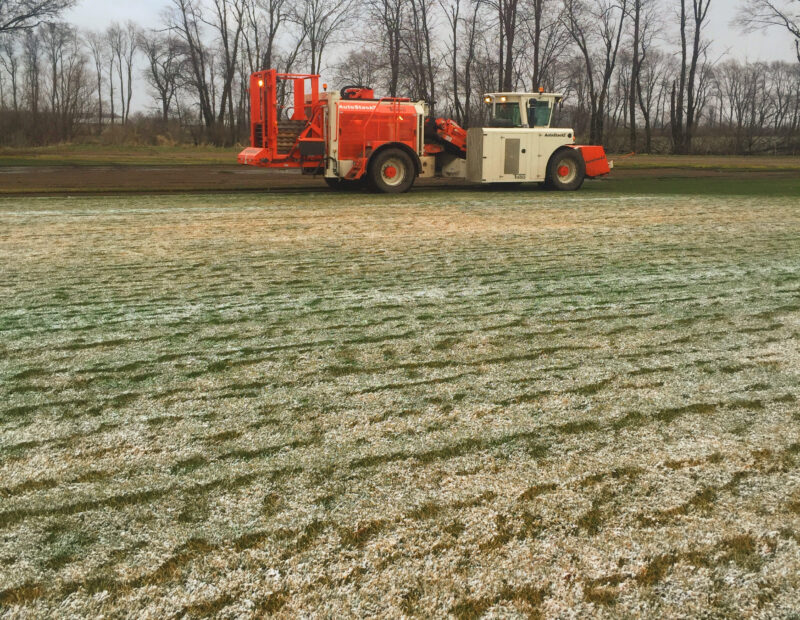1. Quality.
To save money, the big mass merchandisers have diluted their products so much they no longer deliver the essential nutrients grass plants in the Michiana area need. Because of these watered down “programs”, we have been getting more and more calls about lawn programs that can be traced back to these insufficient products. At Red Hen Turf Farm, we believe we can offer customers better fertilizing products at better prices than they are paying at big box stores.
2. Over-Measuring or Under-Measuring the Area of Your Lawn.
So, your fertilizer bag label or your soil test results tell you to apply a certain amount of fertilizer per 1,000 square feet and you’re confused about what to do next. The questions run through your head … “How large is 1,000 square feet? How much fertilizer do I need to buy? How do I know if my spreader is putting on the correct amount?” The first step is to determine the area or square footage of your lawn or garden space. You could use good old-fashioned math problems to calculate the area (REMEMBER GEOMETRY CLASS?) but that would mean you’d have to take some measurements.
Even easier, and probably “accurate enough” is a the free Yard Area Calculator that is hosted on Supersod.com. Simply type in your address, find your lawn on the map, and click around the edges and this handy tool calculates the area for you. It probably won’t be 100% accurate, but we’ve been using this tool for a few months and are pleased with how close it usually is.
3. Spreader Calibration.
So, back to the question of “How do I know if my spreader is putting on the correct amount?” There are so many brands of spreaders, and each one seems to have it’s own settings. You could try checking the website of the company that manufactured your spreader for the right spreader settings. But even then, how do you really know if the settings are accurate? Spreaders must be properly calibrated if they are to deliver granular fertilizers and pesticides to turf at correct rates. As spreaders become older and worn, re-calibration ensures you obtain the best results. Red Hen Turf Farm does offer a guide HERE for spreader calibration tips that you might find useful.
4. Soil Testing
You should only apply the nutrients that your lawn needs, but how do you really KNOW what nutrients your lawn needs? The answers are in the chemistry of the soil, and every lawn has a unique chemical history. The only way to really know what nutrients your lawn needs is by SOIL TESTING. A soil test of your lawn is a key step, especially if you are particular about your lawn or have grass problems. We recommend that you do a soil test every 3 years. If you use our soil testing procedures, we’ll provide you with a kit that you’ll mail to a certified lab. The results are sent to us and we will translate them into layman’s terms, using this information as an important piece of the puzzle for us to create a Customized Fertilizer Program, designed just for you. Once we’ve designed your fertilizer program, we can even give you reminders by phone or email for when it’s time for your next application.
5. Timing.
In so many different ways, TIMING plays an important role when fertilizing you lawn. For some fertilizer products, the instructions tell you to apply on dry grass – so if rain is in the forecast, timing could be especially critical. Some products may even instruct you to water-in the fertilizer, so timing your application around rain could save you from having to use your sprinkler. Fertilizers with added Herbicides or Pesticides work when applied around a specific point in the life cycle of the pest you are trying to eliminate – so again TIMING is important. The importance of timing is also true when it comes to the seasonal life-cycle of your grass since you want to fertilize when the roots are actively growing (which is NOT year-round).
NEED SOME ADVICE?
Give us a call today – 574-232-6811
Article Last Updated 03/06/2025

